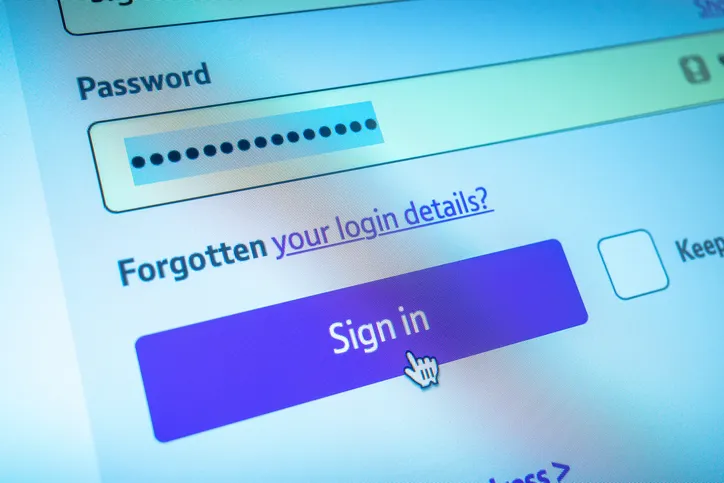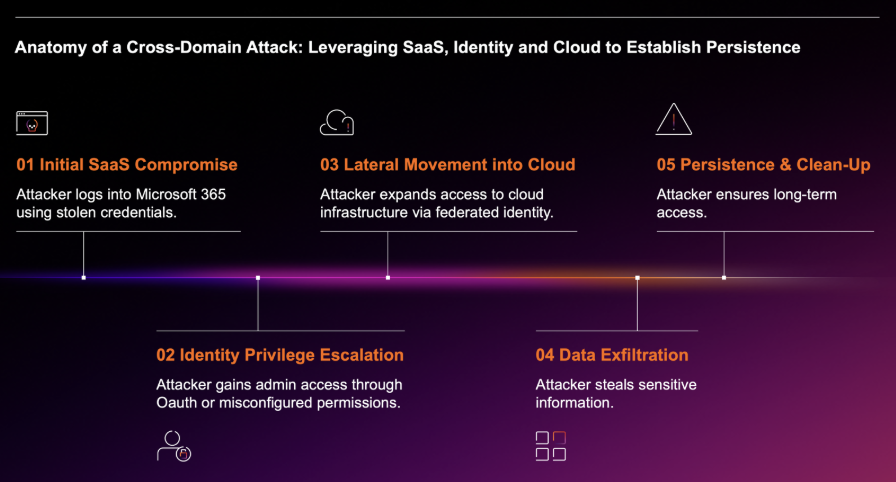Social Engineering in Phishing Attacks
Faced with increasingly cyber-aware endpoint users and vigilant security teams, more and more threat actors are forced to think psychologically about the individuals they are targeting with their phishing attacks. Social engineering methods like taking advantage of the human emotions of their would-be victims, pressuring them to open emails or follow links or face financial or legal repercussions, and impersonating known and trusted brands or services, have become common place in phishing campaigns in recent years.
Phishing with Microsoft Teams
The malicious use of the popular communications platform Microsoft Teams has become widely observed and discussed across the threat landscape, with many organizations adopting it as their primary means of business communication, and many threat actors using it as an attack vector. As Teams allows users to communicate with people outside of their organization by default [1], it becomes an easy entry point for potential attackers to use as a social engineering vector.
In early 2024, Darktrace/Apps™ identified two separate instances of malicious actors using Microsoft Teams to launch a phishing attack against Darktrace customers in the Europe, the Middle East and Africa (EMEA) region. Interestingly, in this case the attackers not only used a well-known legitimate service to carry out their phishing campaign, but they were also attempting to impersonate an international hotel chain.
Despite these attempts to evade endpoint users and traditional security measures, Darktrace’s anomaly detection enabled it to identify the suspicious phishing messages and bring them to the customer’s attention. Additionally, Darktrace’s autonomous response capability, was able to follow-up these detections with targeted actions to contain the suspicious activity in the first instance.
Darktrace Coverage of Microsoft Teams Phishing
Chats Sent by External User and Following Actions by Darktrace
On February 29, 2024, Darktrace detected the presence of a new external user on the Software-as-a-Service (SaaS) environment of an EMEA customer for the first time. The user, “REDACTED@InternationalHotelChain[.]onmicrosoft[.]com” was only observed on this date and no further activities were detected from this user after February 29.
Later the same day, the unusual external user created its first chat on Microsoft Teams named “New Employee Loyalty Program”. Over the course of around 5 minutes, the user sent 63 messages across 21 different chats to unique internal users on the customer’s SaaS platform. All these chats included the ‘foreign tenant user’ and one of the customer’s internal users, likely in an attempt to remain undetected. Foreign tenant user, in this case, refers to users without access to typical internal software and privileges, indicating the presence of an external user.


Darktrace identified that the external user had connected from an unusual IP address located in Poland, 195.242.125[.]186. Darktrace understood that this was unexpected behavior for this user who had only previously been observed connecting from the United Kingdom; it further recognized that no other users within the customer’s environment had connected from this external source, thereby deeming it suspicious. Further investigation by Darktrace’s analyst team revealed that the endpoint had been flagged as malicious by several open-source intelligence (OSINT) vendors.

Following Darktrace’s initial detection of these suspicious Microsoft Teams messages, Darktrace's autonomous response was able to further support the customer by providing suggested mitigative actions that could be applied to stop the external user from sending any additional phishing messages.
Unfortunately, at the time of this attack Darktrace's autonomous response capability was configured in human confirmation mode, meaning any autonomous response actions had to be manually actioned by the customer. Had it been enabled in autonomous response mode, it would have been able promptly disrupt the attack, disabling the external user to prevent them from continuing their phishing attempts and securing precious time for the customer’s security team to begin their own remediation procedures.

External URL Sent within Teams Chats
Within the 21 Teams chats created by the threat actor, Darktrace identified 21 different external URLs being sent, all of which included the domain "cloud-sharcpoint[.]com”. Many of these URLs had been recently established and had been flagged as malicious by OSINT providers [3]. This was likely an attempt to impersonate “cloud-sharepoint[.]com”, the legitimate domain of Microsoft SharePoint, with the threat actor attempting to ‘typo-squat’ the URL to convince endpoint users to trust the legitimacy of the link. Typo-squatted domains are commonly misspelled URLs registered by opportunistic attackers in the hope of gaining the trust of unsuspecting targets. They are often used for nefarious purposes like dropping malicious files on devices or harvesting credentials.
Upon clicking this malicious link, users were directed to a similarly typo-squatted domain, “InternatlonalHotelChain[.]sharcpoInte-docs[.]com”. This domain was likely made to appear like the SharePoint URL used by the international hotel chain being impersonated.

This fake SharePoint page used the branding of the international hotel chain and contained a document named “New Employee Loyalty Program”; the same name given to the phishing messages sent by the attacker on Microsoft Teams. Upon accessing this file, users would be directed to a credential harvester, masquerading as a Microsoft login page, and prompted to enter their credentials. If successful, this would allow the attacker to gain unauthorized access to a user’s SaaS account, thereby compromising the account and enabling further escalation in the customer’s environment.

This is a clear example of an attacker attempting to leverage social engineering tactics to gain the trust of their targets and convince them to inadvertently compromise their account. Many corporate organizations partner with other companies and well-known brands to offer their employees loyalty programs as part of their employment benefits and perks. As such, it would not necessarily be unexpected for employees to receive such an offer from an international hotel chain. By impersonating an international hotel chain, threat actors would increase the probability of convincing their targets to trust and click their malicious messages and links, and unintentionally compromising their accounts.
In spite of the attacker’s attempts to impersonate reputable brands, platforms, Darktrace/Apps was able to successfully recognize the malicious intent behind this phishing campaign and suggest steps to contain the attack. Darktrace recognized that the user in question had deviated from its ‘learned’ pattern of behavior by connecting to the customer’s SaaS environment from an unusual external location, before proceeding to send an unusually large volume of messages via Teams, indicating that the SaaS account had been compromised.
A Wider Campaign?
Around a month later, in March 2024, Darktrace observed a similar incident of a malicious actor impersonating the same international hotel chain in a phishing attacking using Microsoft Teams, suggesting that this was part of a wider phishing campaign. Like the previous example, this customer was also based in the EMEA region.
The attack tactics identified in this instance were very similar to the previously example, with a new external user identified within the network proceeding to create a series of Teams messages named “New Employee Loyalty Program” containing a typo-squatted external links.
There were a few differences with this second incident, however, with the attacker using the domain “@InternationalHotelChainExpeditions[.]onmicrosoft[.]com” to send their malicious Teams messages and using differently typo-squatted URLs to imitate Microsoft SharePoint.
As both customers targeted by this phishing campaign were subscribed to Darktrace’s Proactive Threat Notification (PTN) service, this suspicious SaaS activity was promptly escalated to the Darktrace Security Operations Center (SOC) for immediate triage and investigation. Following their investigation, the SOC team sent an alert to the customers informing them of the compromise and advising urgent follow-up.
Conclusion
While there are clear similarities between these Microsoft Teams-based phishing attacks, the attackers here have seemingly sought ways to refine their tactics, techniques, and procedures (TTPs), leveraging new connection locations and creating new malicious URLs in an effort to outmaneuver human security teams and conventional security tools.
As cyber threats grow increasingly sophisticated and evasive, it is crucial for organizations to employ intelligent security solutions that can see through social engineering techniques and pinpoint suspicious activity early.
Darktrace’s Self-Learning AI understands customer environments and is able to recognize the subtle deviations in a device’s behavioral pattern, enabling it to effectively identify suspicious activity even when attackers adapt their strategies. In this instance, this allowed Darktrace to detect the phishing messages, and the malicious links contained within them, despite the seemingly trustworthy source and use of a reputable platform like Microsoft Teams.
Credit to Min Kim, Cyber Security Analyst, Raymond Norbert, Cyber Security Analyst and Ryan Traill, Threat Content Lead
Appendix
Darktrace Model Detections
SaaS Model
Large Volume of Messages Sent from New External User
SaaS / Unusual Activity / Large Volume of Messages Sent from New External User
Indicators of Compromise (IoCs)
IoC – Type - Description
https://cloud-sharcpoint[.]com/[a-zA-Z0-9]{15} - Example hostname - Malicious phishing redirection link
InternatlonalHotelChain[.]sharcpolnte-docs[.]com – Hostname – Redirected Link
195.242.125[.]186 - External Source IP Address – Malicious Endpoint
MITRE Tactics
Tactic – Technique
Phishing – Initial Access (T1566)
References
[2] https://www.virustotal.com/gui/ip-address/195.242.125.186/detection
[3] https://www.virustotal.com/gui/domain/cloud-sharcpoint.com



























